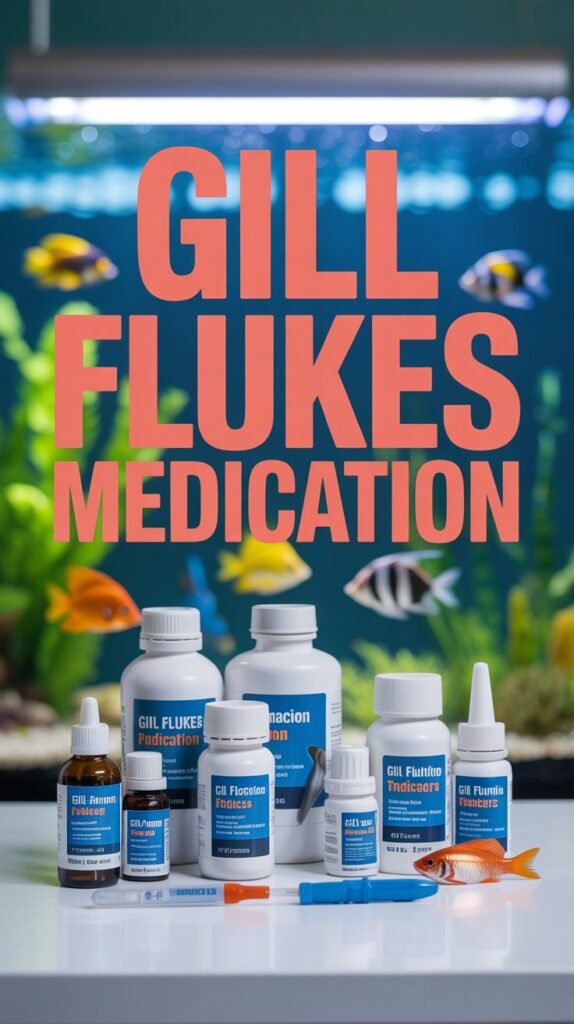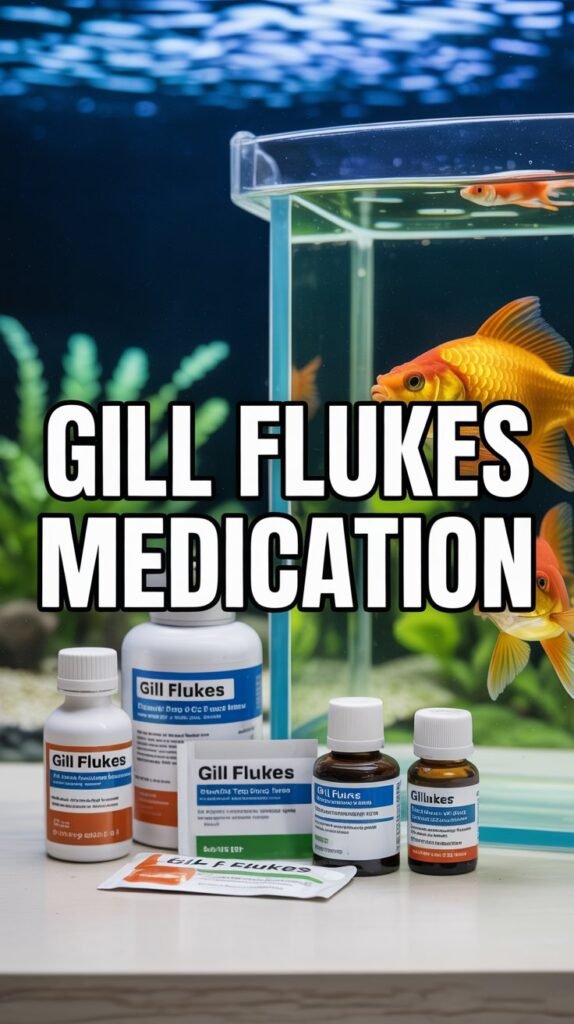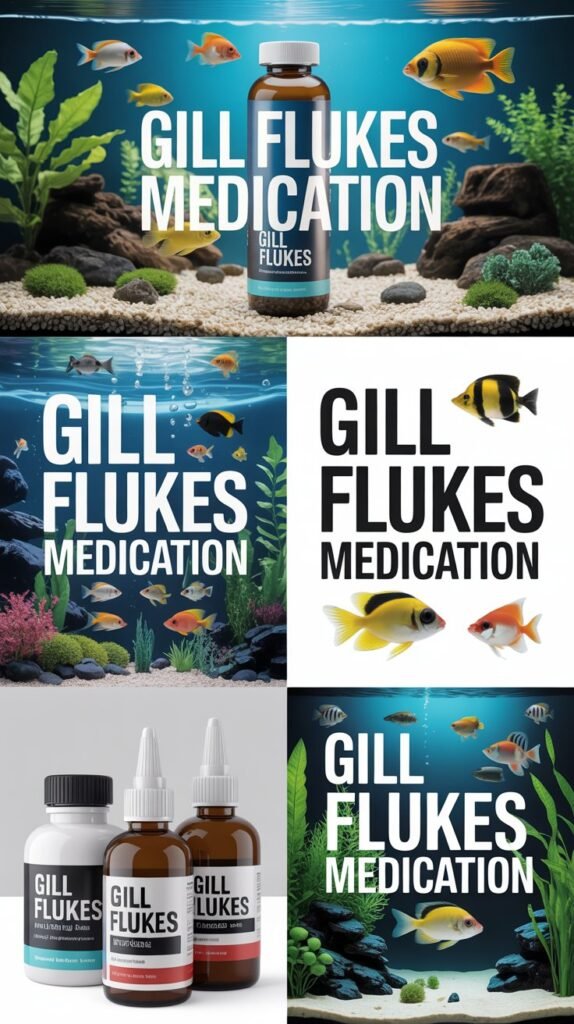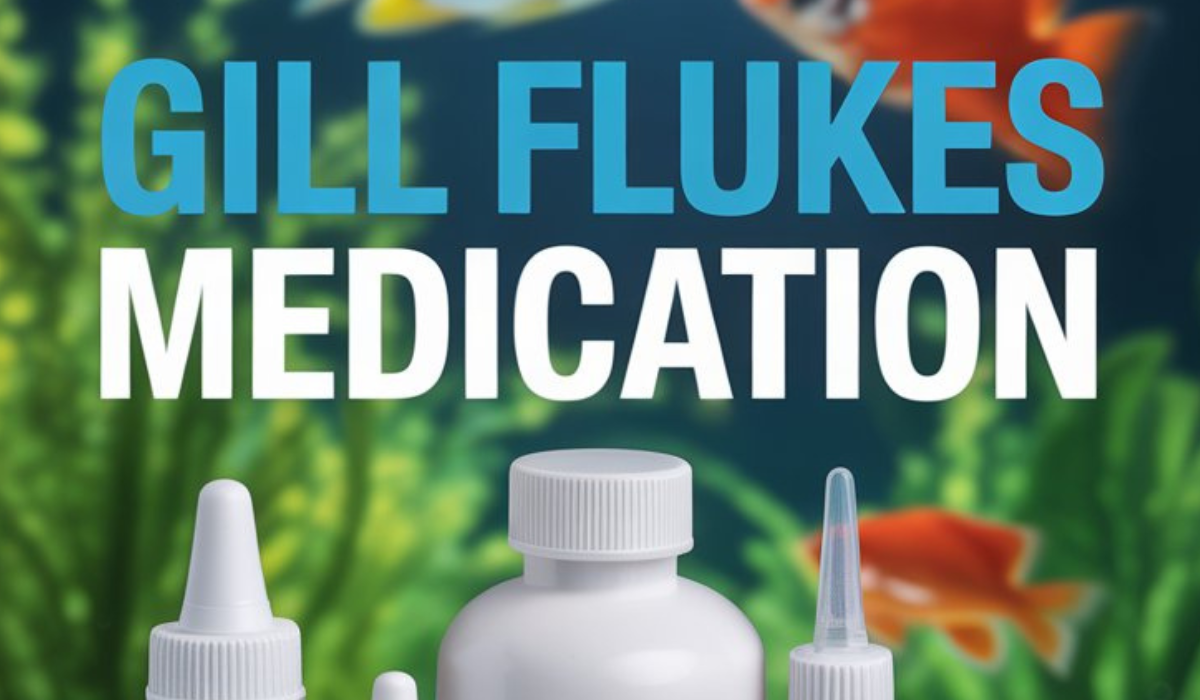If your fish are scratching against surfaces, breathing heavily, or showing clamped fins, it may not just be stress — it could be gill flukes, one of the most common parasitic infections in aquariums and ponds. These tiny, almost invisible parasites can cause severe damage to a fish’s gills, impair breathing, and even lead to death if left untreated.
Fortunately, with the right gill flukes medication and a proper treatment plan, you can eliminate the parasites and restore your fish’s health. This comprehensive guide explores everything you need to know about gill flukes — their symptoms, diagnosis, treatment options, and prevention methods.
What Are Gill Flukes?
Gill flukes are microscopic parasitic flatworms belonging to the class Monogenea. They typically infest the gills of both freshwater and saltwater fish. The most common genera responsible for infections are Dactylogyrus and Gyrodactylus.
- Dactylogyrus – commonly known as gill flukes, affects the gills and lays eggs.
- Gyrodactylus – often called skin flukes, gives birth to live young and can infest both skin and gills.
These parasites attach themselves to the delicate gill tissue using hooks and suckers, feeding on mucus, skin cells, and sometimes blood. Over time, they cause irritation, gill damage, and secondary bacterial or fungal infections.
Life Cycle of Gill Flukes

Understanding the life cycle is crucial for effective treatment because medications must target both adult and juvenile stages.
- Egg Stage: Female flukes lay eggs that stick to aquarium surfaces, plants, or the substrate. These eggs can hatch within a few days to several weeks, depending on water temperature.
- Larval Stage (Oncomiracidium): After hatching, larvae swim freely in the water, searching for a host fish. They must find one within a few hours or they die.
- Adult Stage: Once attached to the gills, they mature and begin feeding. Adults can reproduce quickly, leading to rapid infestations.
Because of their reproductive cycle, multiple treatments are often needed to eradicate both adult flukes and the eggs that hatch later.
Symptoms of Gill Flukes in Fish
Gill fluke infestations can mimic other diseases, so observation is key. Common symptoms include:
- Rapid or labored breathing: Fish may gasp for air or spend more time near the water surface.
- Gasping at the surface: Indicates difficulty in oxygen absorption.
- Clamped fins: A sign of stress or discomfort.
- Scratching or flashing: Fish rub against rocks, gravel, or decorations to dislodge parasites.
- Mucus build-up: Excessive slime on gills or body.
- Inflamed or pale gills: Gills may appear swollen or discolored.
- Reduced appetite and lethargy: Fish lose interest in food and become sluggish.
- Isolation: Infected fish may separate from the group or rest at the bottom.
Severe infestations can lead to respiratory distress, anemia, and death. If multiple fish exhibit these signs, prompt diagnosis and treatment are necessary.
Diagnosing Gill Flukes
To confirm a fluke infestation, visual inspection alone isn’t sufficient. Here’s how aquarists and veterinarians diagnose it:
- Microscopic Examination: A gill scrape or biopsy is taken and viewed under a microscope. The presence of small worm-like parasites confirms infection.
- Behavioral Observation: Persistent flashing, clamped fins, and heavy breathing across multiple fish.
- Water Testing: Poor water quality can worsen the infection, so check for ammonia, nitrite, and pH imbalances.
If you’re unsure, consult a fish vet or experienced aquarist for microscopic confirmation before starting medication.
Gill Flukes Medication: The Most Effective Treatments
Treating gill flukes requires specific antiparasitic medications. Let’s explore the best gill flukes medication options available for aquarium and pond fish.
1. Praziquantel (PraziPro, Fluke-Solve, or General Cure)
Praziquantel is the gold standard for treating gill flukes in both freshwater and marine fish. It’s highly effective, safe, and easy to use.
How It Works:
Praziquantel disrupts the parasite’s cell membranes, paralyzing and killing them without harming the fish or beneficial bacteria.
Dosage:
Follow the manufacturer’s instructions — typically 2.5–5 mg/L for aquarium use. It can be added directly to the water or mixed with food for internal parasites.
Advantages:
- Gentle on fish and filter bacteria.
- Works for both gill and skin flukes.
- Suitable for reef tanks.
Treatment Duration:
Repeat after 5–7 days to target newly hatched flukes.
2. Formalin and Malachite Green Combination

Products like Quick Cure or Formalin-Malachite Green solutions are powerful antiparasitic agents.
How It Works:
Formalin kills parasites by denaturing proteins, while malachite green prevents fungal and secondary bacterial infections.
Caution:
Use carefully — overdosing can stress or kill fish. Avoid use in tanks with invertebrates (shrimp, snails, corals).
Dosage:
Generally, 1 drop per gallon, depending on brand concentration. Always aerate the tank well during treatment.
Treatment Duration:
Repeat after 3–5 days with a water change between doses.
3. Potassium Permanganate (KMnO₄)
Potassium permanganate is a strong oxidizer used in ponds and large tanks.
How It Works:
It oxidizes organic matter and kills parasites on contact.
Dosage:
1–2 mg/L for pond treatments; 0.75–1 mg/L for aquariums.
Caution:
This treatment can deplete oxygen. Ensure strong aeration and never mix with dechlorinators.
Advantages:
- Kills flukes, bacteria, and fungi.
- Useful for cleaning pond equipment and water.
Disadvantages:
- Not suitable for delicate fish like bettas or fry.
- Can discolor the water temporarily.
4. Salt Baths (Sodium Chloride)
Salt is a natural and effective treatment for mild infestations or as a supportive therapy.
How It Works:
Salt causes osmotic shock in parasites, killing them while helping fish regenerate mucus and heal damaged tissue.
Dosage:
- Short-term bath: 1 tablespoon per gallon for 5–10 minutes.
- Long-term treatment: 1–2 teaspoons per gallon in the main tank.
Caution:
Always dissolve salt completely before adding and avoid using with salt-sensitive species or live plants.
5. Copper-Based Medications
Copper is effective against external parasites, including flukes, in marine systems.
How It Works:
Copper ions interfere with parasite respiration and metabolism.
Products:
Cupramine, CopperSafe, or other chelated copper medications.
Caution:
Requires precise dosing — too much can kill fish or invertebrates. Use a copper test kit to monitor levels.
Step-by-Step Treatment Plan for Gill Flukes
To effectively eliminate gill flukes, follow these steps:
- Isolate Infected Fish: Move sick fish to a hospital tank to prevent spreading.
- Perform a Partial Water Change: Remove 30–40% of the water to reduce parasite load.
- Vacuum the Substrate: Remove eggs and organic debris.
- Add Medication: Dose according to product directions.
- Increase Aeration: Gill flukes and medications both reduce oxygen — ensure strong aeration.
- Monitor Fish Behavior: Watch for stress or improvement after 24–48 hours.
- Repeat Treatment: After 5–7 days, re-dose to kill newly hatched flukes.
- Clean Equipment: Disinfect nets, siphons, and decorations.
- Observe for 2–3 Weeks: Make sure symptoms don’t return.
Preventing Gill Flukes

Prevention is far easier and safer than treatment. Follow these best practices:
1. Quarantine New Fish
Always quarantine new arrivals for 2–4 weeks before adding them to your main tank. Many flukes are introduced via infected new fish.
2. Maintain Water Quality
Poor water conditions weaken immunity and promote parasitic growth.
- Keep ammonia and nitrite at 0 ppm.
- Perform weekly water changes (25–30%).
- Use a reliable filtration system.
3. Avoid Overcrowding
Too many fish increase stress and parasite transmission rates. Follow the one inch of fish per gallon rule.
4. Regular Health Checks
Observe fish daily for abnormal behavior or appearance. Early detection means easier treatment.
5. Clean and Disinfect Equipment
Sterilize nets, buckets, and tools after use to prevent cross-contamination between tanks.
6. Feed a Balanced Diet
Healthy fish resist infections better. Offer high-quality pellets, frozen foods, and vitamin supplements.
Home Remedies and Natural Treatments
While medications are most effective, some natural remedies can help support fish health during or after treatment.
- Garlic Extract: Natural antiparasitic that boosts immune response. Add to food or water in small amounts.
- Aloe Vera: Helps soothe damaged gills and skin when used in conditioners.
- Indian Almond Leaves: Have mild antibacterial and antifungal properties, and reduce stress.
- Temperature Control: Maintain stable temperature (avoid sudden drops).
These remedies are supportive, not replacements for proper medication.
Common Mistakes in Treating Gill Flukes
Even experienced aquarists can make treatment errors. Avoid these pitfalls:
- Stopping treatment too early: Eggs may hatch after the first dose.
- Overdosing medications: Can stress or kill fish.
- Ignoring water quality: Dirty water promotes re-infection.
- Not removing carbon filters: Carbon deactivates medications.
- Mixing incompatible treatments: Combining chemicals can be toxic.
Always read product labels and treat in a separate quarantine tank whenever possible.
Recovery and Post-Treatment Care
After successful treatment:
- Change 50% of water to remove medication residues.
- Run activated carbon in the filter for 24 hours.
- Add aquarium salt to help fish recover.
- Monitor gill movement and behavior for improvement.
- Feed nutrient-rich food like bloodworms, brine shrimp, or spirulina flakes to rebuild strength.
Within 7–10 days, most fish fully recover if treated promptly.
Conclusion
Gill flukes can be deadly, but with early detection and the right gill flukes medication, your fish can make a full recovery. Praziquantel-based treatments are generally the safest and most effective, while maintaining clean water and quarantine practices can prevent future outbreaks.
Whether you keep guppies, koi, bettas, or marine species, always keep a treatment plan ready, monitor your fish closely, and act quickly at the first sign of distress. Healthy, parasite-free gills mean happy, active fish and a thriving aquarium ecosystem.
FAQs About Gill Flukes Medication
1. What is the best medication for gill flukes?
Praziquantel (brands like PraziPro or Fluke-Solve) is the most effective and safest medication for treating gill flukes in both freshwater and saltwater fish.
2. How long does it take to cure gill flukes?
Treatment typically lasts 7–14 days, with multiple doses required to kill adult flukes and any newly hatched larvae.
3. Can gill flukes spread to other fish?
Yes. Flukes reproduce quickly and can infect all fish in the same aquarium or pond if untreated.
4. Are gill flukes contagious to humans?
No, gill flukes cannot infect humans. They are fish-specific parasites.
5. Can salt alone cure gill flukes?
Salt can help with mild infestations or as supportive care but is not sufficient for complete eradication. Combine with an antiparasitic medication for best results.
6. Is it safe to use Praziquantel with shrimp or snails?
Yes, Praziquantel is generally reef-safe and does not harm shrimp, snails, or beneficial bacteria.
7. How do I prevent gill flukes in my aquarium?
Quarantine new fish, maintain excellent water quality, avoid overcrowding, and perform regular tank maintenance.
8. Can I treat my pond for gill flukes?
Yes, pond-safe medications like Fluke-Solve (praziquantel-based) or potassium permanganate can effectively control flukes in large outdoor systems.
9. Why are my fish still sick after treatment?
You may have missed the second treatment or not removed all eggs. Re-dose as instructed and ensure water quality is optimal.
10. Are gill flukes visible to the naked eye?
No, gill flukes are microscopic and can only be confirmed through a microscope examination.

